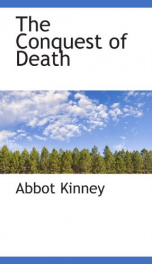eucalyptus

Purchase of this book includes free trial access to www.million-books.com where you can read more than a million books for free. This is an OCR edition with typos. Excerpt from book: ance, every January putting out a tew rootlets as though seeking moisture, and then died. These desert plants are so organized as to withstand several years of drought. I presume that the Australian Mallee, Eucalyptus microtheca and other species of the arid interior must have the same power, and if the water for their existance be not stored in the body of the plant as in Agave, cactus, etc., it will be found in the roots. EUCALYPTUS CORNUTA. Eucalyptus cornuta, the "yate," is a very attractive, graceful tree. Its foliage is greener than that of the blue gum and tends to persist in the round or oblong form of leaf. It is a rapid grower and resists drought on light soil better than Eucalyptus globulus or Eucalyptus vimin- alis. Eucalyptus cornuta is one of our hardiest and fastest growing Eucalypti. The bark is a pleasant light drab color and nearly smooth. The tree grows tall, has great vigor in our valleys, and the timber is valuable. I have observed old specimens with only scant amounts of fruit. As a rule the Eucalypti are free fruiters and many of them carry their profusion of seed boxes so long as to form distinct disfiguration. In habit this tree is low branching and is consequently not perfectly suited for a road tree. I planted about a mile of road with these trees chapter{Section 4at Santa Monica. Fortunately it was a double row plantation on each side of the road with Eucalyptus globulus on the outside. In this combination it made an attractive avenue. Alone, however, it might have been unsatisfactory. While it does branch low the Yate makes a large handsome tree with plenty of foliage. Mr. Scharff's specimen is one of his best trees. The growth of one in my Santa Monica garden has been exceptionally satisfactory. The flowers are so large and close in the...
Info about the book
Author:
Series:
Unknown
ISBN:
0738569488
Rating:
4/5 (4)Your rating:
0/5
Languge:
English
Users who have this book
Users who want this book
What readers are saying
What do you think? Write your own comment on this book!
write a commentif you like eucalyptus try:
Do you want to read a book that interests you? It’s EASY!
Create an account and send a request for reading to other users on the Webpage of the book!



